Add a four-footer to your family during the last year or so?
You’re not alone.
Many people have added a dog to their pack since the winter of 2020.
But while some of these new owners are enjoying pet-parent life, others have found the experience stressful and exhausting.
Some are even looking for a way out.
And this often leads to a truckload of guilt, confusion, and regret.
But while some of these new owners will be best served by throwing in the towel and finding a new home for their pandemic pooch, most probably just need a little guidance to get back on the right track.
We’ll try to help you navigate these choppy canine waters below.
We’ll explain some strategies for addressing common behavioral and husbandry challenges, we’ll discuss the expectations many of us have about dogs, and we’ll even try to help you decide if you’re just not cut out for pet parenthood at all.
Solving Pandemic Pooch Problems: Key Takeaways
- You’re not alone! Lots of people have added pets to their families over the last year or so, and many are experiencing problems with their new pupper.
- There are ways to make most of these problems better! We share a number of training and management strategies for dealing with some of the most common issues new owners are facing.
- No pet is perfect! Unfortunately, while we certainly love dogs, all four-footers present challenges — it’s just part of the pet-parent gig.
- Achieving pet-parent bliss requires two things. You must work hard to address the issues you can fix and learn to accept the problems you cannot.
First Things First: We’re Not Judging
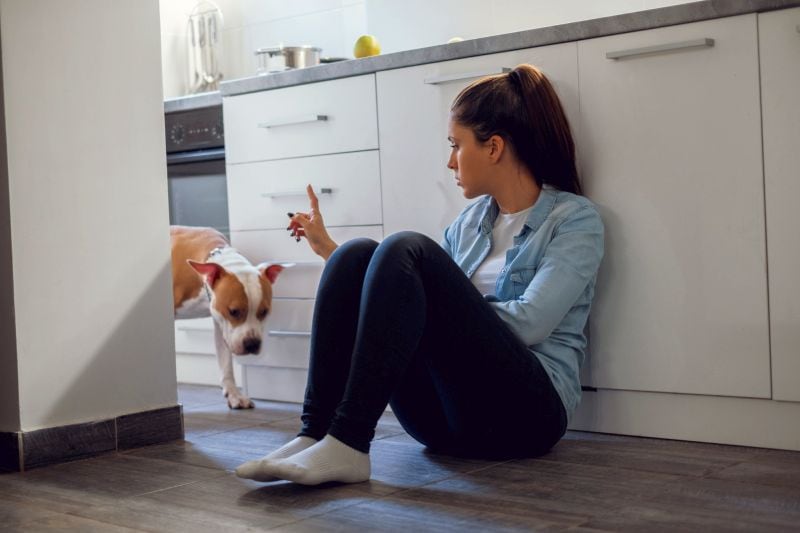
Becoming a new dog owner can be challenging in even the most mundane times, but everything has been more difficult over the last year – including pet parenthood.
So, understand that we aren’t here to shame anyone.
Hopefully, one or more of the tips discussed below will help solve some of your problems, clearing the way for a long, happy life with your new four-footer. But don’t beat yourself up if the gig hasn’t worked out like you planned.
As long as you’re doing your best to take care of your pooch and acting in her best interest, we applaud you and want things to work out.
And that includes people who will ultimately decide to find a new home for their pet. You just need to do so in a compassionate and responsible manner (more on this in a bit).
How Many People Brought Home a New Pet During the Pandemic?
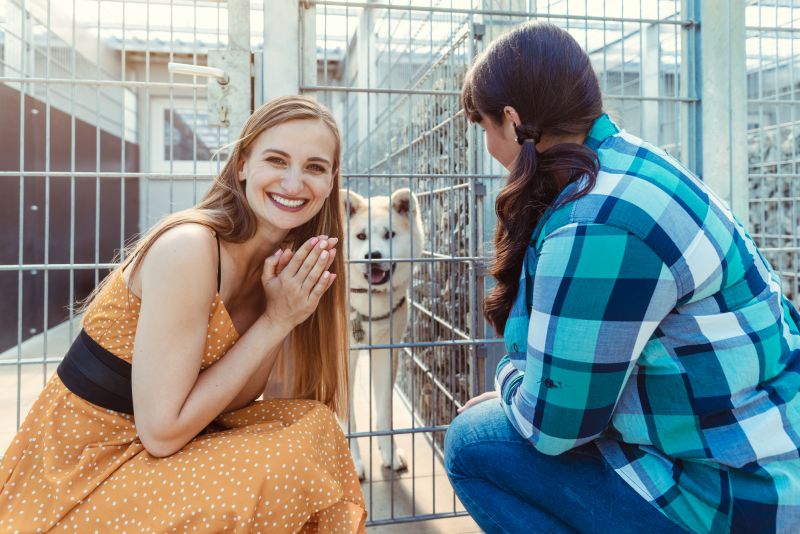
Conventional wisdom holds that scads of people brought home a new pet during the pandemic. And anecdotally, you may have noticed more people walking dogs around your neighborhood or at the dog park.
But it’s hard to know exactly how many pets were adopted or purchased during this time, as there’s no overarching authority who tracks such info.
This means that estimates are all over the map.
To give you an idea:
- The ASPCA reports that 23 million American homes added a new pet to the pack during the crisis.
- According to the Washington Post, one local shelter saw adoptions climb 30% to 40% higher during the height of the pandemic.
- USA Today reported similar increases, citing a Nielson survey in which 20% of respondents reported adopting a dog or cat between March and June of 2020 — a figure that was up from 5% the previous year.
- NPR’s numbers were a little lower, as they reported that adoptions climbed about 9% nationwide, but that’s still a sizable increase in terms of the total number of four-footers who were welcomed into new homes.
But oddly, a handful of sources actually noted a decrease in the number of pet adoptions during 2020.
The ASPCA reports that many individual shelters saw a decline in adoptions in 2020, and The Conversation reports that nationwide, adoptions fell 17% when compared with 2019.
What gives? How did more people add a pet to their home during the pandemic while adoptions at many shelters fell?
It’s simple, really: Adoption isn’t the only method by which people add new pups to their packs.
Some people purchased dogs from retailers or breeders, and others received dogs as gifts.
And many foster pet parents decided to keep the doggo they’ve been paired with (a phenomenon which undoubtedly became more common during the pandemic).
On the flip side, many owners, who may have surrendered their dog to a shelter in a normal year, decided to keep Fido around.
For that matter, logistical challenges made pet adoption trickier. Everyone was social-distancing and shelters were operating under reduced hours and with skeleton crews.

There are also geographic and demographic issues at play.
For example, many northern states were forced to “import” adoptable dogs from the south where the supply is higher. Pet-adoption statistics also varied across generational lines, with millennials adopting more pets than any other generation.
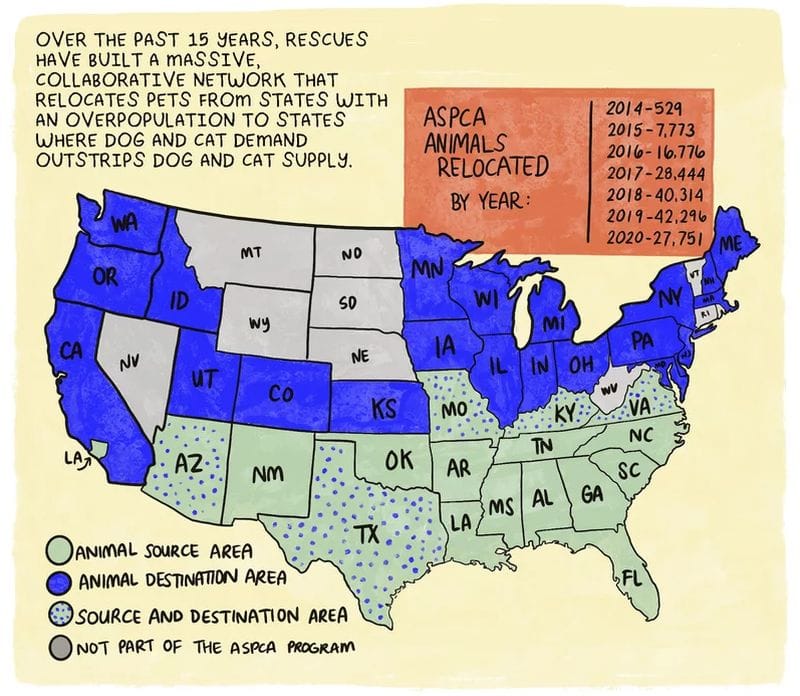
So, what’s the ultimate takeaway?
Tracking the pet population is complicated stuff.
We may never know exactly how many dogs joined new families during the pandemic, nor how many of these were directly attributable to the pandemic — surely many people were already planning on picking up a pooch, the pandemic just happened to hit around the same time.
Nevertheless, most lines of evidence strongly suggest that there are more doggos living in private homes today than there were at the end of 2019.
Eight Common Pandemic Pooch Problems & Solutions
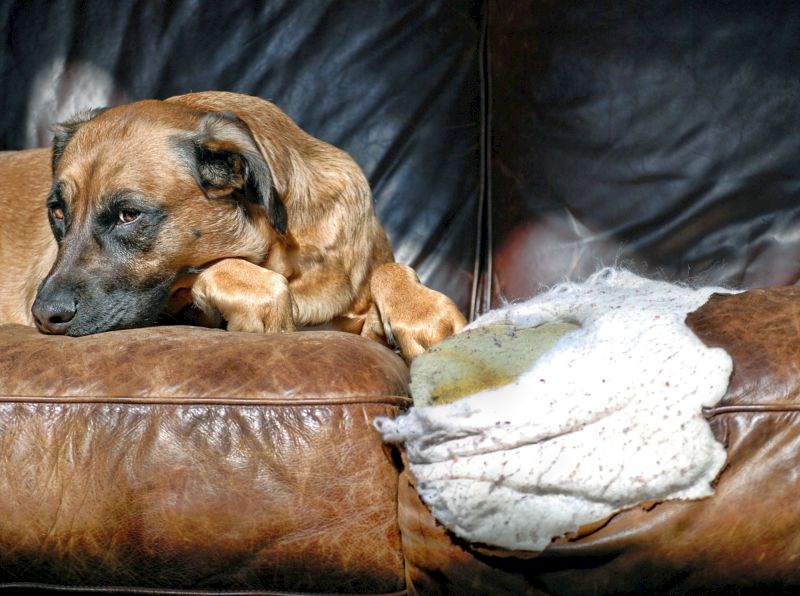
We’ll dive into a few of the most common problems owners are experiencing below, but understand that many owners are certainly dealing with more than just one issue. In such cases, you’ll need to gather all the patience you can muster and just start working on them one at a time.
Owners facing multiple problems may have a hard time deciding which issue to tackle first. You essentially have two options, each of which has different pros and cons.
Strategy #1: Start with the easiest problems to solve. This is a great approach for novice owners, as a tiny bit of progress can snowball and propel you toward a more harmonious relationship with your new pet. It’ll also help you build confidence in your dog-training and management abilities.
Strategy #2: Alternatively, you can start with whichever problem is having the biggest impact on your life. This is better for more experienced owners and anyone who’s facing an extremely serious problem, such as aggression, reactivity, or severe separation anxiety.
Whichever approach you decide is best, the key thing is to just jump in and get started. The quicker you get started, the quicker you can enjoy the fruits of your labor.
Behavioral problems are likely the most common issues that causes pet parents to rethink their decision to add a dog to their family (and you’ll notice that the first five common problems discussed below are all behavioral in nature).
Fortunately, while many behavioral problems can be maddening, most can be improved via a combination of training and management solutions. There are a number of different behavioral issues new pups can present, but the following four are among the most common.
Pandemic Pooch Problem #1: Your dog is barking and lunging at other people or dogs.
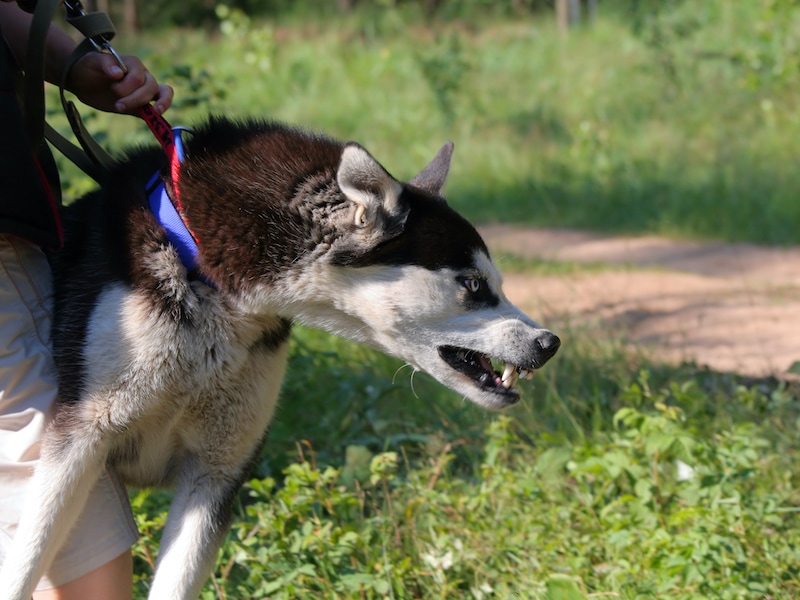
Solution: It can be very disheartening to bring home your new pooch only to discover that she’s morphed into some kind of barking, lunging, snarling terror, who seems hell bent on attacking any and every other dog or human she encounters.
Called “reactivity” in dog trainer lingo, this phenomenon can be particularly upsetting for new owners. And contrary to popular opinion, this issue isn’t limited to dogs who’ve been abused or mistreated – even the most pampered pups can react negatively when they encounter others.
Further, this behavior isn’t usually the result of hardwired aggression, but rather, it often comes from your dog’s fear and stress associated with various stimuli.
Fortunately, with some hard work, you can reduce your dog’s reactivity and increase her confidence, which will allow you to start enjoying walks and other outings.
Remember to keep safety in mind when working with reactive dogs. If your dog is large, she’s actually trying to bite others, or you have difficulty controlling her, it’s wise to work with a certified canine behavior consultant.
Check the video below to see some tips and examples for helping reduce a dog’s reactivity, but here’s the basic approach you’ll need to take:
- Start by preventing your dog from encountering her “triggers” (the things that set her off) as much as possible. This will prevent her from “practicing” her full-throttle response. This may mean walking her when the park isn’t crowded or hiding behind cars when encounters with other dogs or people are unavoidable. Try to only encounter triggers when you’re prepared and in “training mode”.
- Start desensitizing and counter-conditioning your dog to the presence of her triggers. Desensitization refers to gently allowing your dog to be in the presence of her triggers at a distance, so that these triggers are no longer novel or unusual to her. For dogs, a lot of fear stems from fear of the unknown! Counter-conditioning refers to training her brain to associate these triggers with awesome rewards. You’ll need to learn the finer points of dog desensitization and counterconditioning, but you can get started by grabbing a handful of the smelliest, tastiest treats you can and giving them to your dog whenever she sees her trigger. You’re going to want to keep her below her far enough away from the trigger that she doesn’t completely freak out (called “exceeding her threshold”). This may be quite a distance for some pups – up to 100 yards or more.
- With repetition and practice, you’ll likely notice your dog remaining calmer when she sees her triggers. Eventually, once she’s enjoyed enough treats while looking at her triggers, her brain will stop seeing other dogs (or whatever her trigger is) as a threat. In fact, she’ll learn that their presence means she gets a delicious treat.
Pandemic Pooch Problem #2: Your dog is peeing and pooping in the house.
Solution: Puppy house-training struggles can be especially frustrating for new owners, but they’re often easy to address via management strategies while you work on a long-term, training-oriented solution.
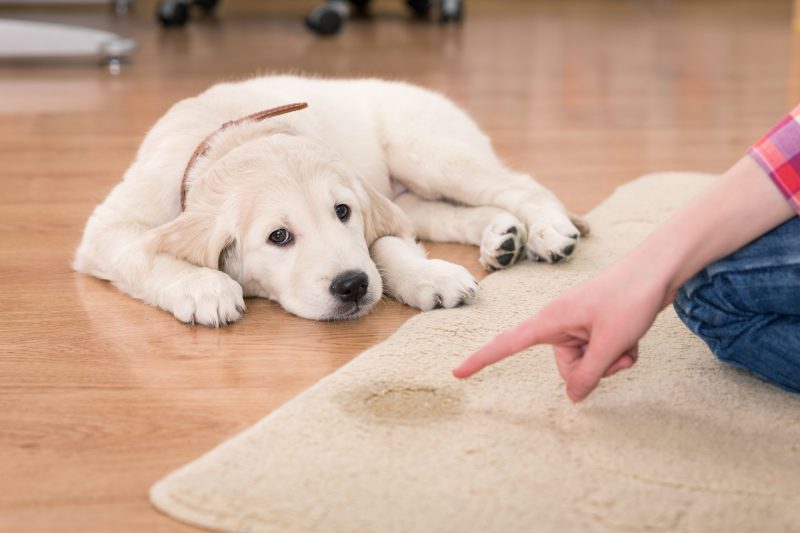
Here’s the best way to approach the poopin’ and peein’ problem:
- Start by taking whatever steps are necessary to prevent your dog from relieving herself indoors. This will not only help you keep your sanity (and protect your floors) but it’ll also help break the peeing-on-the-floor cycle.
- Confine your dog to a relatively small area whenever you can’t directly supervise her or keep her in a place where she’s free to poop or pee. A crate is ideal, but you could also try using dog gates to keep her in a small area in your kitchen or bathroom. Dogs are generally reluctant to relieve themselves when confined in a small place, so she’ll likely hold it when sequestered inside a crate or gated area (assuming the area is small – it should only be large enough that she can lay comfortably, stand, and turn around).
- Simultaneously, you’ll want to take her outside for frequent walks. And we mean frequent – at least once every hour or two for young puppies (most adult dogs should be able to hold it for at least three or four hours).
- Every time she does the deed outdoors, you want to praise her and throw a celebratory puppy party. Over time, she’ll start to learn that she is not supposed to poop or pee indoors and should instead do so outside.
A few other helpful tips for house-training your pet include:
- Don’t scold her, “stick her nose in it,” or engage in any other punitive measures. These methods are cruel, they don’t work, and they’ll likely slow your progress.
- Make sure that you’ve completely eliminated any lingering odors associated with previous accidents. You may be able to do so with a bit of vinegar or some other DIY solution, but commercial urine odor eliminators are well worth the small expense.
- Use a crate as a tool for house-training your new pet but don’t simply lock her up in a crate for absurd lengths of time. Make sure you’re giving her plenty of love, attention, and stimulation during the frequent trips outside.
- Make sure that you consult your vet if your efforts don’t pay off within a few weeks or so. A few different medical problems (such as bladder infections) can make house-training more difficult than normal. For that matter, if you notice any other troubling symptoms (blood in the urine, strange odors, or straining), you’ll want to call your vet pronto.
- Realize that some breeds are simply more challenging to house train than others. Specifically, small and toy breeds often have more trouble learning the poop-and-pee protocols than large breeds do.
Pandemic Pooch Problem #3: Your dog is barking at all hours of the day and night.
Solution: This particular problem isn’t an issue for all owners; some dogs are pretty quiet, and some owners simply don’t mind if their dog barks all the time. But others – particularly those who have noise-averse neighbors – may find their dog’s incessant barking insufferable.
Fortunately, nuisance barking is fixable (as is nighttime whining) for most four-footers.
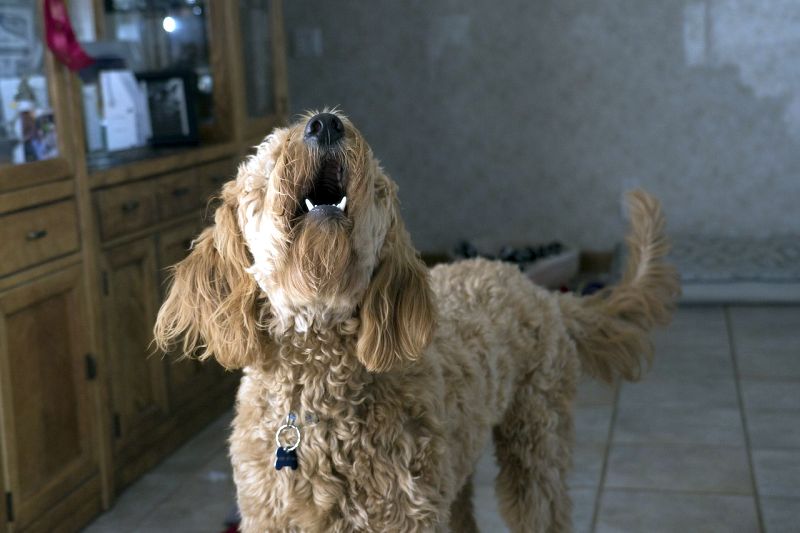
The first thing you’ll need to do is identify the stimulus that causes your dog to bark. Some dogs may only bark in response to skateboarders, while others may bark at just about everything. Some even bark directly at their owners.
The best training strategy will depend on your dog’s specific trigger (as different types of barking are caused by different emotions and for different reasons).
- Dogs who bark at perceived threats (such as the UPS worker or garbage trucks) should be taught to do something instead of barking. For example, you can mat train your dog, so that she knows when the mailman strolls up, she’s supposed to go lay on her mat. Alternatively, you could teach her to go grab a favorite toy (which is particularly helpful, as it’s hard to bark while holding something in her mouth).
- If your dog is barking at you or house guests, she may be doing so to solicit attention. In such cases, the best solution is to teach her that it won’t work. So, instead of giving your dog love, scritches, treats, or throwing her ball when she barks at you, first insist that she waits patiently and quietly. Once she’s chilling out politely, give her the type of reward she wants.
- If your dog is barking while you aren’t home, she may be suffering from separation anxiety. Separation anxiety can be challenging to address, but you’ll need to desensitize your dog to your absence – essentially, teach her that she’ll be fine while you’re gone and that you always come back.
There are also a few management options available for dogs who bark all the time.
For example, if your dog is barking to alert you of perceived threats, you may simply need to prevent her from seeing these things by drawing the shades or preventing her from accessing rooms with a view of the neighborhood.
If your dog is barking because of separation anxiety, you may want to invest in a two-way pet camera that dispenses treats. This way, you can check in on your little gal periodically and give her a treat to distract her or reward her for good behavior.
Pandemic Pooch Problem #4: Your dog is chewing up your stuff.
Solution: Having a dog who chews things up is not only frustrating but it’s also dangerous. You never know when your dog is going to swallow a plastic toy or grab hold of something dangerous that may cause an injury or sicken her.
So, it’s definitely a problem you’ll want to address aggressively (aside from the fact that you’re sick of finding your fancy dress shoes reduced to a pile of slobbery leather and laces).
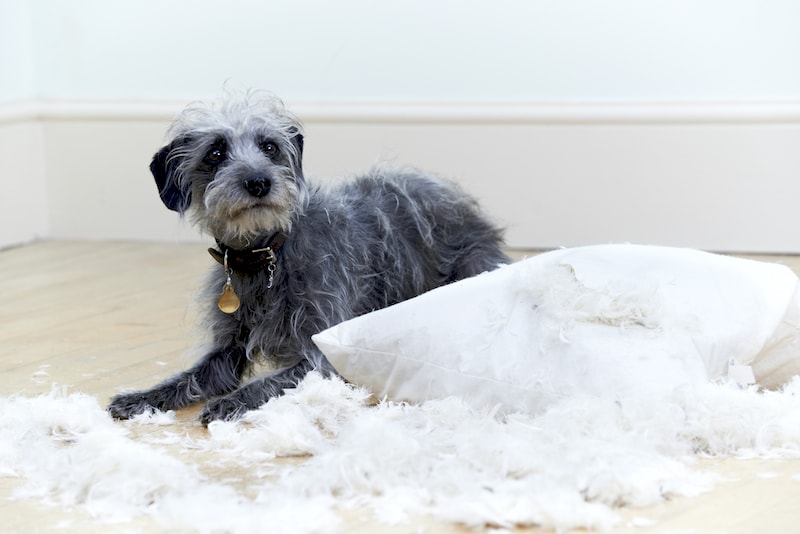
This is actually a problem that you’ll want to approach via management first, so that you can keep your canine safe while waiting for training solutions to take effect. And this means putting some kind of boundary between your doggo and the stuff she likes to chew.
Confining your fluff ball to a gated-off, dog-safe area is one approach, but some owners may simply be able to keep potential chewing targets (especially dangerous ones) off the floor.
Once you’ve ensured your pup’s world is safe and free of things she likes to chew, you can begin trying to implement training solutions. And this will require you to identify the reason she’s chewing things in the first place.
- Understand that chewing behavior is completely natural for dogs, and it’s not something you’ll want to prevent entirely. You just need her to chew on things that are safe and designed for the purpose. So, pick up a few durable chew toys and let her have at it.
- Many dogs chew when they’re bored or anxious, which means that in addition to providing your pup with a few safe chew toys, you’ll want to provide more physical and mental stimulation. This not only means going on plenty of walks and allowing her ample opportunity to play like the goofball she is, but it also means keeping her brain buzzing. You can do this in a variety of ways, but dog training games and interactive dog toys are two of the easiest solutions.
- Puppies chew quite a bit while they’re teething, and they should be allowed to do so. Chewing on things helps alleviate some of the pain pups feel while their adult chompers are coming in, so you don’t want to prevent them from chewing on things – just make sure to provide your teething puppy with chew toys that are suitable for her to gnaw on.
Pandemic Pooch Problem #5: Your dog is dragging you around during walks.
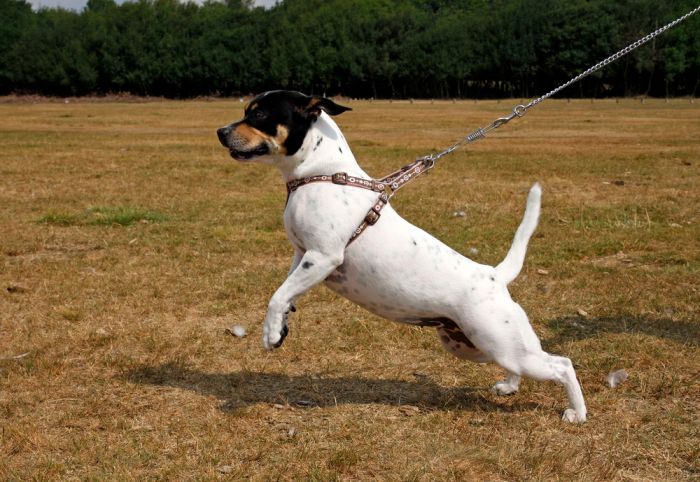
Solution: Most dogs will pull on their leash in an effort to sniff some particularly interesting pee or when they’re overwhelmed with excitement. But some dogs take this to an entirely different level and drag their poor owners hither and yon.
While this may not be a serious safety issue, it’s still something you’ll want to address. You’re going to be walking your dog several times a day for the next several years, so it makes sense to keep your outings pleasant for both parties.
Ultimately, you’ll want to employ training solutions and encourage your dog to exhibit good leash manners and train her to loose leash walk.
There are a number of ways to do so, but you’ll basically want to teach your dog that there is no better place in the world to be than at your side. Mix in some tasty treats, plenty of praise, and a lot of practice, and most dogs will learn how to behave better on a leash.
However, while you’re working on your dog’s leash manners, you can use management solutions to provide some quick results. The best way to do so is via a no-pull harness or collar. Avoid aversive tools (such as chain or prong collars), as they can exacerbate the problem, damage your relationship with your dog, and potentially cause injuries.
Pandemic Pooch Problem #6: Your dog is triggering your allergies.
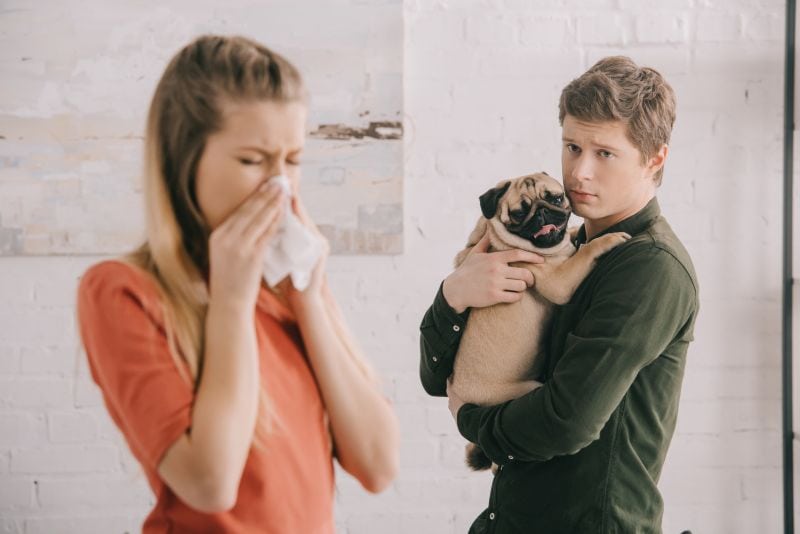
It’s kind of a cruel joke: You get a new doggo, give her everything she needs, rearrange your life around her, and then you get assaulted by the dander she leaves in her wake. Instead of enjoying your new pup, you’re too busy taking antihistamines and trying to go through life while sneezing and dealing with watering eyes.
But unfortunately, this happens to more new owners than you’d think. The fact is many people don’t realize they have a dog allergy until after they bring a new furball home.
In some cases, you may simply need to find the dog a new home and resign yourself to living a dog-free life. But before going there, consider trying a few of these things to help keep your symptoms under control:
- Talk to your doctor about solutions. There are a variety of medications and treatment options available for allergy sufferers, ranging from over-the-counter medicines to desensitization protocols that are designed to help your body learn that dog proteins don’t require a full-blown immune response.
- Take steps to reduce your dog’s shedding. It isn’t actually your dog’s hair that causes your allergies to flare up – it’s usually her dander and saliva. But, shed hair provides a great vehicle for the offending substances to make their way to your skin and nasal passages. So, by doing things like keeping your dog well-groomed, you can cut down on the number of allergens you’re exposed to, which may help reduce the symptoms you experience.
- Consider purchasing an air purifier. Air purifiers can help remove some of the allergy-triggering particles from the air in your home, which may help tame your allergies. As a bonus, an air purifier will also help reduce the dog odors and smells in your home.
Of course, the best possible solution for those who suffer from dog allergies is to simply start with a dog breed that doesn’t produce a ton of allergens (contrary to popular notion, all dogs produce some allergens, though poodles and many similar breeds don’t produce as many as others).
But it’s a bit late for that now, so you’ll just have to make the best of things.
Pandemic Pooch Problem #7: You simply can’t afford your new pet.

Unfortunately, there’s no getting around one simple truth or pet parenthood: Dogs are expensive.
It really is just that simple.
CNBC estimates that owners will spend between $27,000 and $42,000 over their pet’s life.
And unfortunately, society tends to gloss over this fact.
This sets up a situation in which well-meaning owners find themselves struggling and miserable as they try to do right by their pet with the limited funds they have available.
But that is neither here nor there. The current problem is that you have a dog and are struggling to afford her.
There aren’t any magic bullets that’ll alleviate this issue, but there are a number of things you can do to save money while caring for your pet. This includes:
- Go the DIY route. If you have any crafting skills at all, you may want to consider making some of your dog’s gear at home. With a little effort, patience, and some stuff you probably already have laying around the house, you can make things like DIY dog beds, custom DIY dog collars, and DIY makeshift muzzles.
- Employ preventative health strategies. Healthcare is undoubtedly one of the most expensive components of canine ownership, so – aside from simply loving your pet and wanting her to remain healthy – you’ll save money by avoiding any unnecessary treatments down the line. This means doing things like brushing your dog’s teeth regularly, providing plenty of exercise, and utilizing a good flea and tick prevention program.
- Buy dog food in bulk. Along with healthcare, dog food will represent a significant percentage of the money you’ll spend on your pet. And while you can’t get around the need to feed your pet, you may be able to save a surprising amount of money by buying dog food in pretty large quantities. You don’t want to purchase more food than your dog can consume in a few weeks (and no longer than a month, maximum — kibble doesn’t last much longer), but by going with large bags rather than small bags, you’ll save a few bucks each time you buy a bag.
- Learn to groom your pet yourself. Some dogs don’t require very much grooming, but poodles and many other breeds with fancy fur coats require regular baths and trims to keep them looking and feeling their best. But you don’t necessarily need to pay for these services – you can learn to groom your dog yourself with at-home grooming tools. Start by learning how to bathe your dog and trim her nails, then you can begin learning how to brush and trim her coat.
- Go generic when possible. You never want to compromise on supplies or gear that may put your pup’s health or safety in jeopardy. So, it’s wise to stick to premium foods, super-safe toys, and leashes that are built to last. But there are a variety of other tools and supplies in which you can save a few bucks. This would include things like grooming supplies, food dishes, and canine clothing.
Pandemic Pooch Problem #8: You just don’t like being a pet parent.

It takes a pretty impressive amount of self-awareness and honesty to just admit that you don’t enjoy having a dog.
Maybe you’ve discovered you really don’t like having dog hair all over your stuff, or you’re already sick of going on walks several times a day. Maybe you realize you just don’t have the patience for your pup, or you just didn’t realize how much time, care, and money dogs need.
Whatever the reason, there’s no shame in deciding dog life isn’t for you. It’s a big responsibility that involves a decade (or longer) commitment, and it certainly isn’t for everyone.
So, what do you do if you decide that pet parenthood just isn’t for you?
- Begin by ensuring that you’re completely certain about your decision. There’s nothing wrong with deciding that you don’t want a dog, but because this means you may need to rehome the four-footer (which can be difficult on the dog), you’ll want to be sure. Consider the reasons you don’t like being a dog mom or dad and try implementing some of the solutions to common problems we discussed earlier before moving on.
- Keep taking good care of your dog while you consider your options. While we won’t judge those who decide that canine kids aren’t in the cards, the fact is, you already have a dog. And this means you’re responsible for your dog’s well-being. It may take several weeks or months to unravel your pet-parent relationship and find your dog a new home, so just be sure that you continue to give the little woofer the best possible life while doing so. It’s not her fault you decided you don’t really want a dog.
- Start investigating rehoming options. Ultimately, if you decide you don’t want to be a pet parent, you’ll need to rehome your dog to find another, better home for your pooch. You can do so in myriad ways, such as by posting the pooch on a pet-rehoming website, advertising the four-footer’s availability to friends and family members on social media channels, or by placing her with a rescue or shelter. The former two solutions are preferable to the latter, as shelters and rescues typically already have their hands full. But whichever route you choose, be sure that you accurately relay the dog’s personality and any problems she poses – you don’t want her bouncing from one home to the next over the years.
Once you’ve found a new home for your pet, you’ll likely feel a lot better about the situation. Just realize that rehoming a dog is rarely easy, which further emphasizes the importance of embarking on the pet-parenthood train carefully.
Be sure that you follow any guidelines or rules regarding rehoming your pet. For example, many shelters only allow dogs to be adopted if the owner agrees to return the canine to the shelter if things don’t work out.
Don’t Shoot the Messenger, But Things May Get Worse with Your Dog

Unfortunately, while many owners are already struggling with pup problems, things may only get worse as we all start going to work and school again. This sudden change in lifestyle will cause many pandemic pooches to suffer from separation anxiety once mom and dad aren’t around all the time.
We’ve touched on a few of the most common manifestations of separation anxiety above (namely, nuisance barking, potty problems, and destructive chewing), but separation anxiety can trigger other issues, such as depression.
Separation anxiety can certainly be one of the most frustrating problems to deal with, but it is generally correctable. In fact, owners who implement the correct steps will generally enjoy a high rate of success.
The trick is, treating separation anxiety takes a lot of work and – most importantly – patience.
You’re going to have to baby-step your dog from the status quo to a state of mind in which she won’t become inappropriately distraught when you leave her alone. As explained earlier, this typically means simply leaving her alone for increasingly long periods of time.
You may start by simply leaving the room for 30 seconds before returning. Once you come back, give your dog plenty of praise.
Lather, rinse, and repeat, while gradually increasing the duration of your absence. Within a few weeks, you may be able to leave for a few hours at a time without returning home to find puddles or destroyed belongings.
An Unpleasant Truth: You May Need to Reexamine Your Concept of Dog Ownership
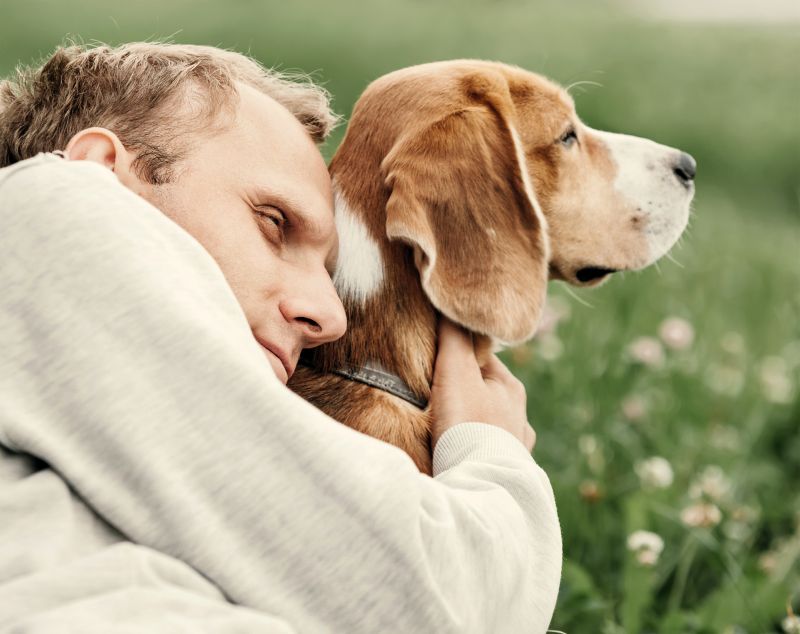
Look, you don’t have to sell us on the value of a good dog. Few things will bring joy to your life like the love of a four-footed friend.
But pet ownership doesn’t always work out like we’d hope. And in some cases, unrealistic expectations cause problems for new pet parents.
Many people want their dog to be nothing but a bundle of cuddles, who’ll satisfy their every whim and more-or-less exist to please them.
But dogs have other ideas.
In fact, that’s the whole point – dogs are sentient, feeling beings, with wants, desires, preferences, and tendencies of their own. And part of the dog-ownership gig is learning about your dog and doing your best to foster a harmonious relationship between the two of you – warts and all.
Some dogs have issues getting along with other dogs. Some tend to chew on things you’d rather they didn’t whenever left alone. Some never seem to get the hang of the potty-training process (looking at you, dachshunds).
But that’s OK – the same thing happens when people have kids.
Some children turn out wonderfully, while others become ne’er-do-wells who never move out of the basement (or worse).
But in most cases, the parents of these problematic children still love their kiddos. They accept that there’s an inherent amount of uncertainty in adding a new human to the family, and they just jump in with both feet.
They just have to adjust and make sacrifices to ensure the relationship works.
And you will have to do the same thing with your dog.
Maybe your dog won’t end up being an agility champ. Maybe she won’t impress the neighbors with a litany of tricks. Maybe she won’t even like you as much as she likes your spouse.
But these things are all OK, and honestly, canine challenges should be expected. A big part of dog ownership is figuring out ways to work around these issues.
***
I leave you with an example, concerning my own dog.
In a word, she’s amazing. She’s smart, beautiful, sweet, and loves nothing more than just hanging out with her pa.
But she’s not perfect, either.
She has some reactivity issues, she hates the vacuum cleaner, and she’s incredibly finicky.
So, I’ve tried to work on those things I can, and adjust my own expectations for those I can’t.
For example, I’ve found a dog food topper from Open Farm that makes her slurp down dinner with gusto and I just do whatever is necessary to get through vacuuming time with minimal chaos.
But while I could deal with these things, I needed her to be less reactive.
So, we worked on it.
Now, a few years later, we’ve made quite a bit of progress. People don’t really frighten her anymore, though other dogs still set her off.
And you know what? That’s OK.
We’re still working on her canine-reactivity, but I have just accepted the fact that she’s never going to be the kind of dog to romp around at the park with other four-footers.
I’ve also accepted that I need to try to walk her during off-peak times, so we wake up with the robins for our morning walks and go to the park mid-day, when most other dog-walkers are at work. We also take advantage of rainy weather — we just throw on our rain gear and enjoy walks in relative solitude.
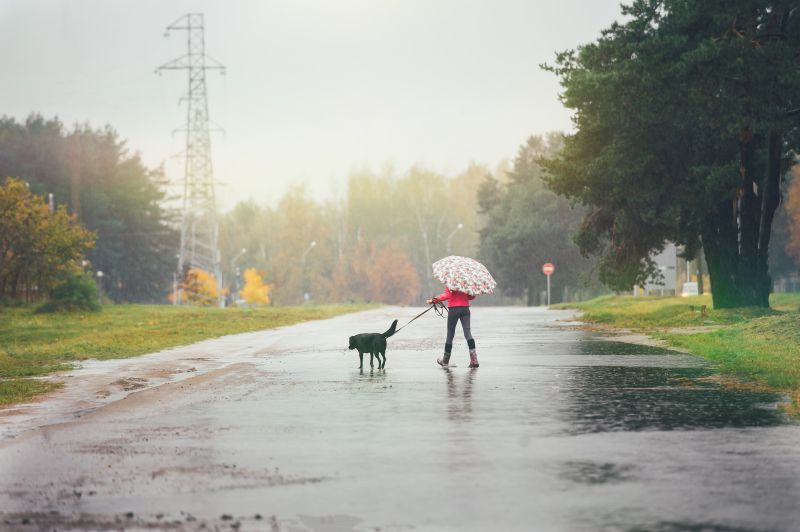
The point of all this is, you have to be thankful for the awesome traits your dog exhibits and learn to adjust to those things that aren’t so awesome.
Dog ownership is a two-way street, and you probably won’t end up with the perfect dog.
But that’s only fair — you’re probably not a perfect owner, either.
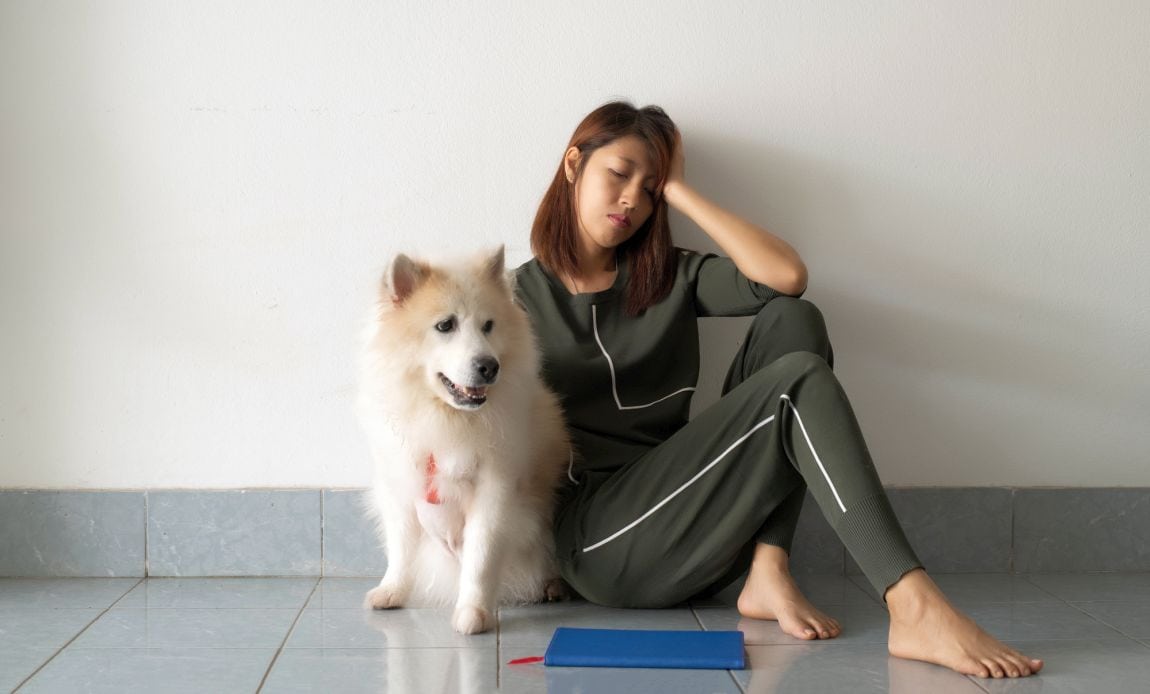

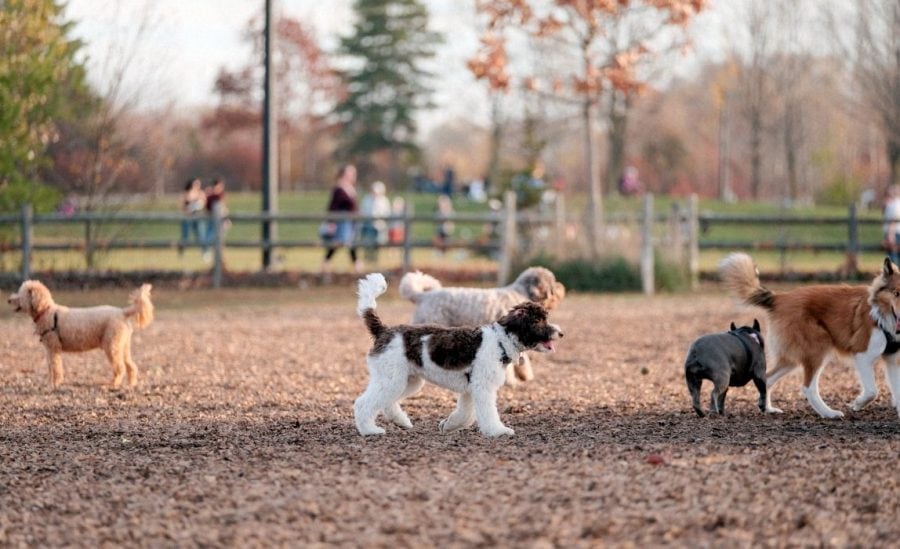



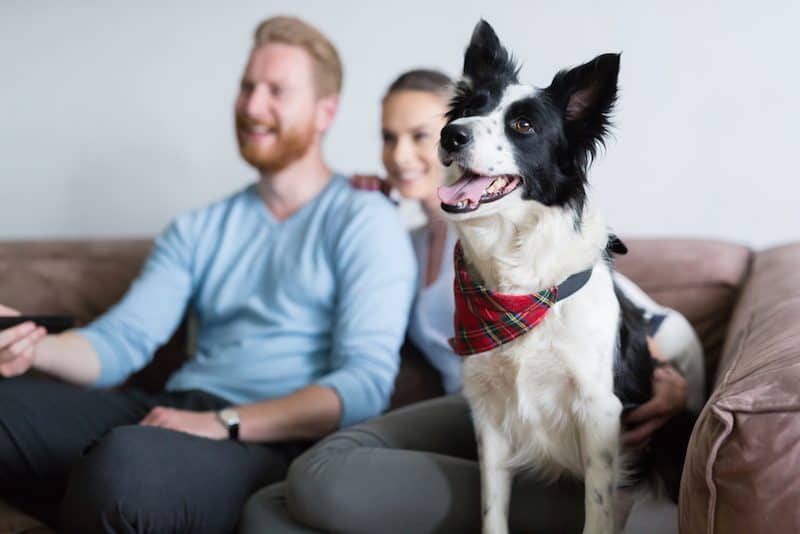
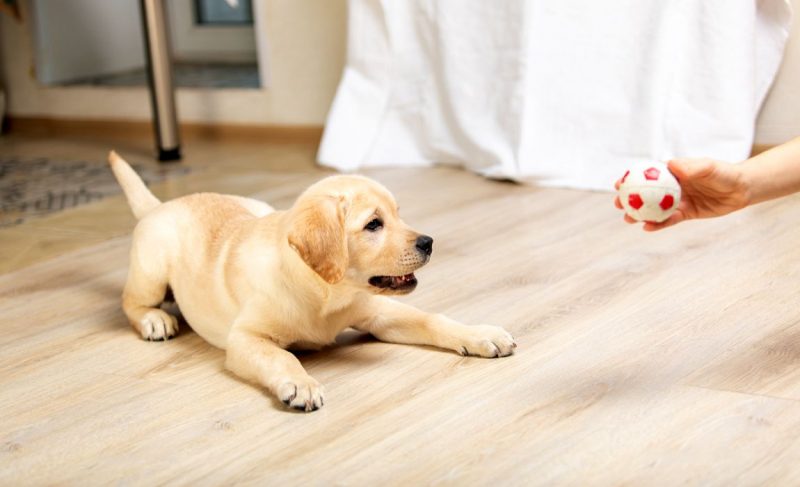
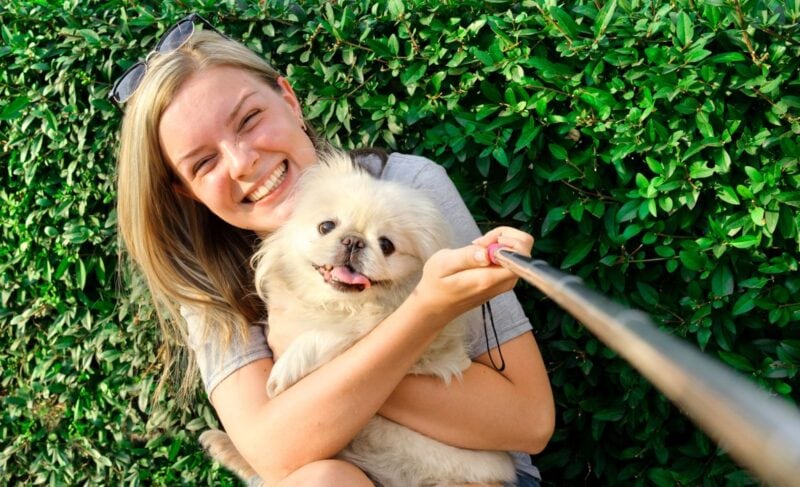
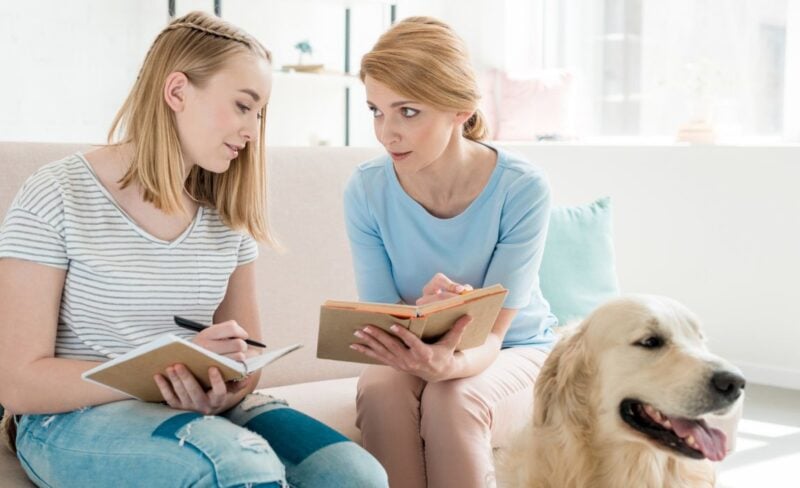
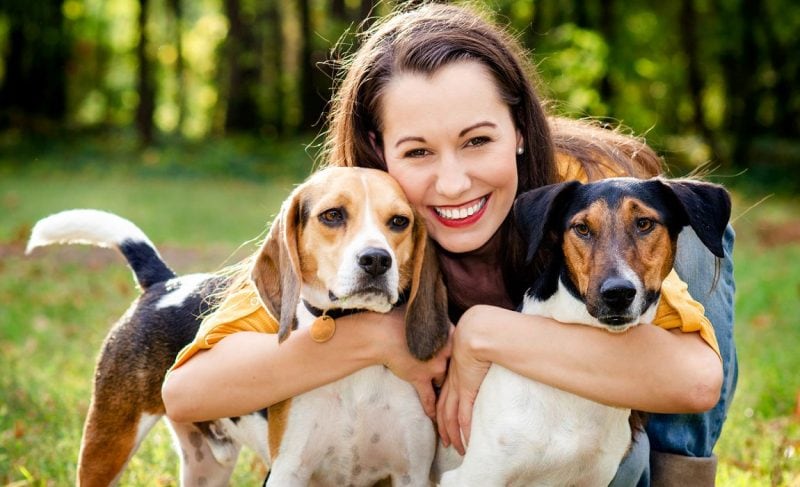

Leave a Comment